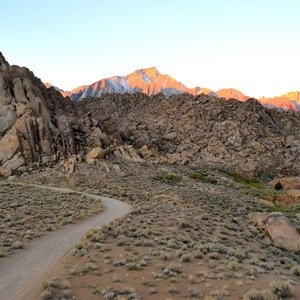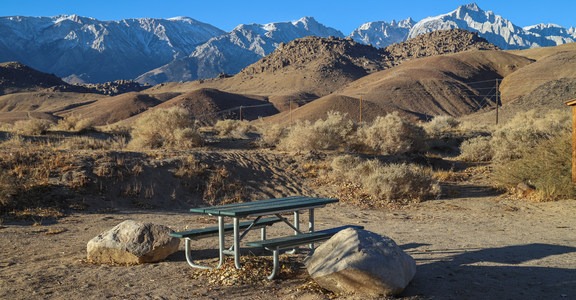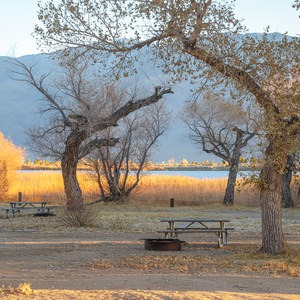You are here
Thor Peak is one of the peaks you can see on the drive up to Whitney Portal despite it being overshadowed by its neighbouring mountains. The summit rarely sees visitor but it can be accessed from different aspects ranging from class 2 scrambles and mountaineering routes to 5.10 trad climbing routes. Because it is part of the Mount Whitney permit area, a permit is required here even if you complete Thor Peak as a day hike/climb.
This climbing route approaches Thor Peak from the North Fork of Lone Pine Creek. Sharing the first mile with the main Mount Whitney Trail, the trail for Thor Peak then splits near a creek. There is a pretty obvious sign where the turn off is located. From the turn off, the trail steepens up right away for a couple miles until you reach another creek crossing. From here, you go up to Ebersbacher Ledges at 9,550 feet. Climbing up on the ledge is mostly class 2 with some short class 3 moves involved. This section can look a bit scary at first due to exposure but isn't as bad as it looks. From here, you will drop down a small bit of elevaiton to Lower Boy Scout Lake. This will mark the start of the proper climb of Thor Peak.
Depending on which season you are climbing in, the first 1,200 feet of the climb can be either snow or loose scree and boulder field type-of-terrain. During most winters, as when this climb was done, the whole slope above Lower Boy Scout Lake will be covered in deep snow and will have the potential of rock fall danger from above as the sun warms up the slopes. As you climb the snowfiled, and emerge out of one of the natural gullies leading up the summit ridge, the summit ridge will come into view. Once on the ridge you'll encounter a gentle plateau to get there. You'll have about a half-mile to hike along the plateau to reach the summit.
The view from the summit is impressive as you can see both sides of the Owens Valley and a clear view of Mount Whitney, the Needles and the peaks forming the rest of the Whitney Massif.
Heading down is a lot more pleasant than the way up. The snow (or scree/sand) softens with every step and you can plunge step all the way back to the lake and start tracing your way back to Whitney Portal.











Comments
Sign In and share them.